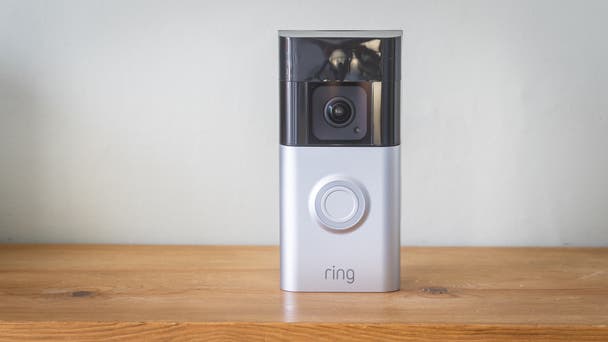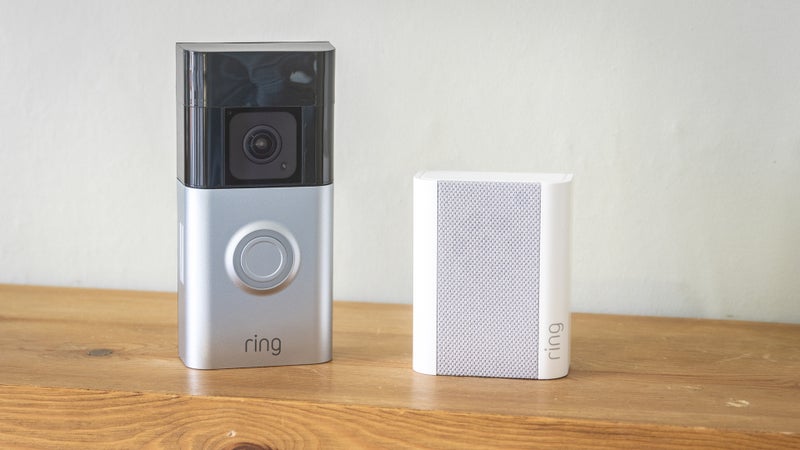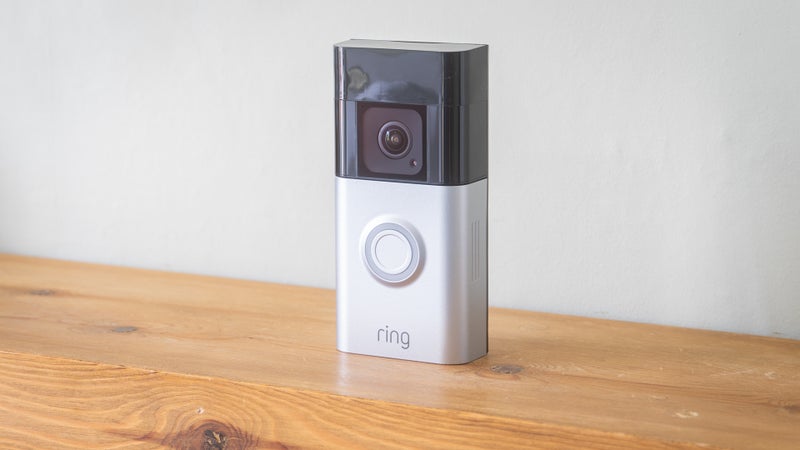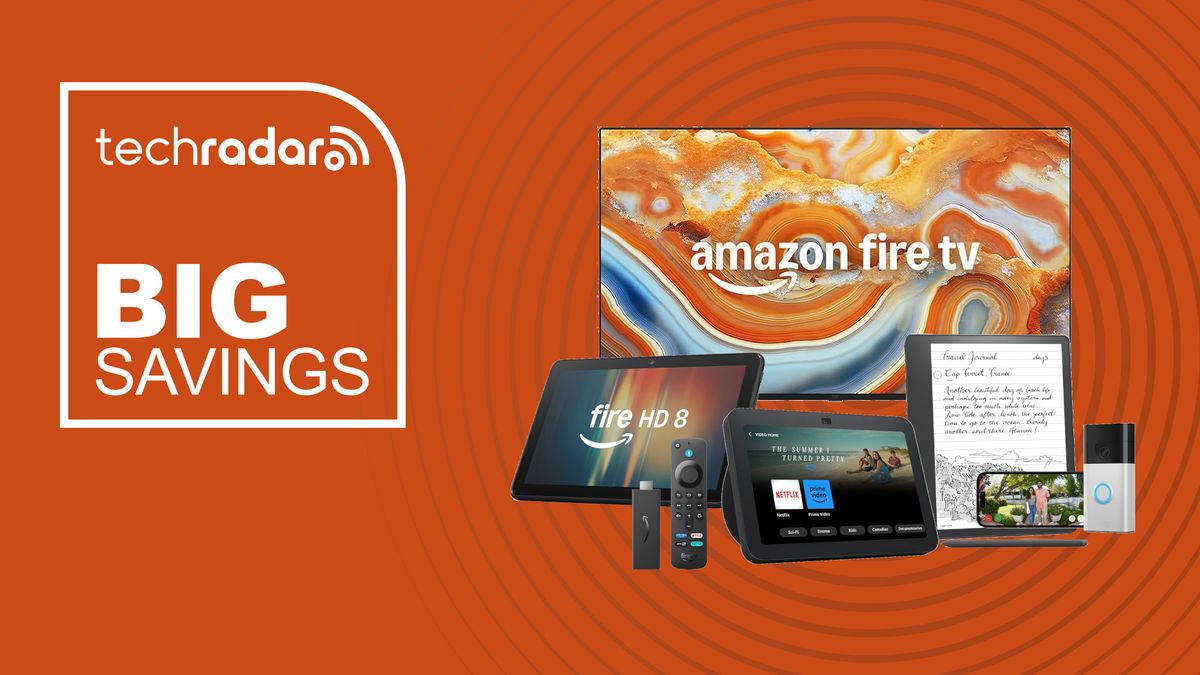Ring Battery Video Doorbell Pro review: radar tech and clever birds-eye view make this doorbell a winner
Ring Battery Video Doorbell Pro review: radar tech and clever birds-eye view make this doorbell a winner
Share:
It can be hard to know where to start with the Ring Video Doorbell range. Of the seven models available in 2025, three look identical yet vary in price by a full 100 per cent. To make things even more confusing, the newest model is one of the cheapest, and the most expensive is also the oldest. The doorbell I’m reviewing here came out in 2024. It is the flagship of Ring’s battery-powered video doorbells and the first to carry the Pro name.
![[Ring Battery Video Doorbell Pro]](https://static.independent.co.uk/2025/01/29/12/29/Ring-Battery-Video-Doorbell-Pro.jpeg?quality=75&width=608&auto=webp 608w)
We’ll come to the specifications in a minute, but first the hardware. The grey plastic doorbell measures 12.8 cm tall, 6.2 cm wide and 2.8 cm deep. As always, it comes with everything you need to install it yourself, including screws, wall plugs, tools (although you’ll need a drill), a charging cable for the removable battery, and an optional plate for mounting the doorbell at an angle. Like other Ring doorbells, the Battery Video Pro does not come with a chime. Instead, when a visitor presses the button you’ll be notified via the Ring smartphone app. You can have the doorbell alert you through compatible Alexa smart speakers too. Ring sells a plug-in chime separately for £29.99. You can also get the Chime Pro, which costs £49.99 and doubles as a Wi-fi signal booster, and can be useful if you intend to install the doorbell a long way from your router.

Camera. This doorbell shares its camera with other models of Ring. It has a 2048 x 1536 resolution that creates a square-ish, high-definition image of a head-to-toe view of visitors, and can be used to spot packages left on your doorstep. The Ring app also has a function for notifying you when a delivery is left in the doorbell’s field of view. That resolution might not sound enormous compared to today’s 4K smartphones, but it’s plenty for a doorbell and the 159-degree lens (horizontal and vertical) gives a nice clear view of your home’s surroundings.
The camera also benefits from both greyscale and colour night vision. The former uses infrared to produce a black-and-white image, even in total darkness, while the latter attempts to add some colour. This can create a better-quality image, but in my testing I found it added little. Since there’s a lamppost near my front door, colour night vision recordings consisted of a background tinted yellow by the street light, while the rest of the images, including any visitor, was left in greyscale. I found it was best to stick to black-and-white.
Features and connectivity. At its core this video doorbell works like most others, in that it alerts you via a smartphone app when the button is pressed. You can then use the doorbell’s camera, speaker and microphone to have a video call with the visitor, telling them you’ll be there in a minute, or that you’re not in but the parcel can be left on your doorstep. The Ring also works as a security camera, alerting you to motion and giving you the ability to ward off anyone loitering by the door. Every interaction with the doorbell is recorded to Ring’s cloud storage service, where footage can be viewed and downloaded to your phone. However, the cloud service is only available via a paid subscription – more on which in the next section.
What sets this Pro model apart from the rest of Ring’s battery-powered family is how it uses radar technology to detect motion in 3D and create a birds’ eye view. This requires a bit of setting up, where you use satellite imagery in the Ring app to tell the camera which way it is facing from your property, and where it should monitor. For example, you can tell it to start recording when it spots movement on your drive and front lawn, but to ignore movement in the road or on your neighbour's property.
Once set up, the doorbell will alert you to movement (or to the button being pressed) in the usual way, but as well as a view from the camera, the app shows the route the visitor took as they approached. This is laid onto a satellite image and shows, for example, if someone has loitered around your car before approaching the door, or peered through the shed window, then walked away. This form of motion detection works from up to six metres away and covers almost 180 degrees horizontally. It’s a nice additional feature, especially if you’re concerned about car theft and you park close enough for the doorbell camera to be within range. But you could save £70 and go for the Battery Video Doorbell Plus instead, which is almost identical but lacks radar, 3D motion and birds’ eye view.
That model also misses out on the Pro’s Audio+ and noise cancellation technology, which is another nice-to-have, since it aims to cut out background noise and improve the audio of your recordings, but I don’t think missing out on it is a dealbreaker. Storage and subscription. Ring doorbells do not store their video recordings locally. Instead, footage is uploaded to Ring’s cloud storage service, where it can be accessed via the smartphone app. Cloud storage is only available when paying for the Ring Home subscription, which starts at £4.99 a month or £49.99 a year for the Basic tier, as of January 2025.














